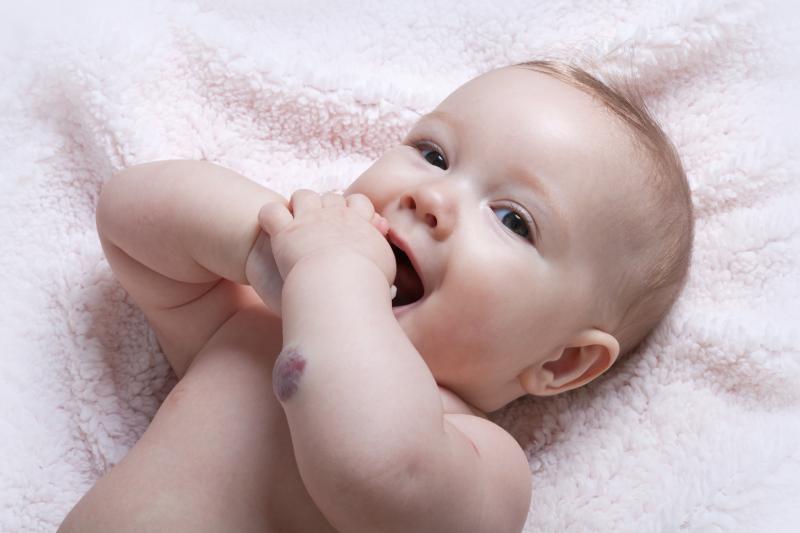
Early treatment of infantile haemangiomas (IH) with oral propranolol is effective and safe in Asian populations, as shown in a Singapore study, reinforcing results from previous research.
“Given the favourable risk-benefit profile, propranolol should be the first-line therapy for IH that require treatment,” the researchers said.
A retrospective review was conducted using medical records and clinical photos of paediatric patients with IH treated with propranolol in a tertiary paediatric hospital in Singapore from January 2010 to February 2015. Eighty-eight infants were identified, of whom 79 were included in the final analysis. Majority of the patients were female (75.9 percent), while 41.8 percent were born preterm.
The most common lesion sites in these infants were the head and neck (65.8 percent), particularly the orbital or preorbital region (45.6 percent). The mean age of onset was 2.3±4.5 weeks of age, and the mean age at treatment initiation with propranolol was 7.7±10.5 weeks of age.
Healing was observed in majority of the patients, with 44.3 percent experiencing improvement of >75 percent and 29.1 percent showing improvement of 50–75 percent. The age at initiating propranolol had a significant impact on the infant’s response to treatment. [Singapore Med J 2020;doi:10.11622/smedj.2020008]
“Similar to observations from other studies, our study found that early treatment with propranolol, especially in patients below 1 year of age, was associated with better response and degree of improvement,” the researchers said. [Ulster Med J 2013;82:16-20]
“However, a retrospective review of 18 patients by VivasColmenares [and colleagues] reported a favourable response beyond the proliferation phase of IH, with complete response in 72.2 percent of patients and partial response in 27.8 percent,” they added. [Pediatr Dermatol 2015;32:348-352]
These findings suggest that propranolol may confer further benefits if initiated beyond the proliferative phase. No other factors have been found to correlate with increased efficacy of propranolol in the present study other than early treatment initiation, according to the researchers.
Moreover, Sans and colleagues reported a mean therapy duration of 6 months (range, 2–10 months), while Siegfried and colleagues suggested a gradual tapering in dosage over a period of 2 weeks. Another study proposed 4–6 months duration, with a gradual weekly decrease of 25 percent in dosage over 4 weeks. [Pediatrics 2009;124:e423-431; N Engl J Med 2008;359:2846; Hong Kong Med J 2010;16:341-346]
A meta-analysis by Li and colleagues revealed a mean age at propranolol initiation of 4.7 months, with response seen within 24 hours on an average dose of 2 mg/kg/day. On the other hand, a recent study showed that propranolol at 3 mg/kg/day for 6 months was effective in the treatment of IH. [Pediatr Dermatol 2015;32:e210-214; N Engl J Med 2015;372:735-746]
Treatment-related adverse events, such as hypoglycaemia, hypotension, bradycardia and bronchospasm, did not occur frequently. Patients with milder side effects, such as sleep disturbance or cool hands and feet, did not need to stop treatment, according to the researchers.